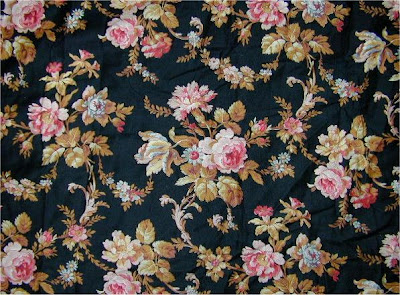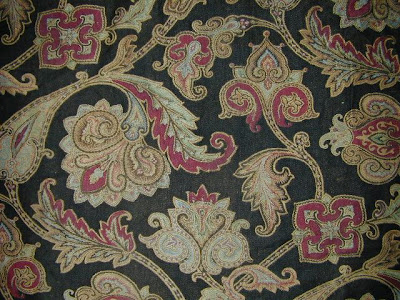We can only marvel at the intricate and beautiful stitchery on French antique curtains, clothing and quilts. Antique clothing could include tiny hand-stitched French seams, open work, embroidery and appliqué, as on the christening gown pictured below.
The huge sets of curtains and bedhangings had long seams that were stitched selvedge to selvedge in tiny, perfect hand-stitches. Once the seamstress had stitched the many yards of seams on a set of voluminous curtains and bedhangings, the pieces then had to be hemmed and the curtains rings had to be attached with thick thread - all by hand.
But it was in the quilts and boutis that the sewing needles really began to sing!
The old quilts of France were almost always made of full fabric-width panels or large pieces of fabric - nothing at all like the patchwork in traditional American quilts. Very large "family" quilts would be made of two and a half fabric-widths of cloth.
The fabric of the top side and the bottom of the quilts were usually different colors or patterns. The color of the quilting thread was chosen so it worked best with the fabric on the top side. The most common stitched quilting pattern was the diamond shape, but quilts took their intricacy from the abilities and inspiration of the women who did the stichery.
In Provence, the boutis combined elaborate stitchery pattern with a padding that was inserted after the quilting was done, to raise and emphasize the design. In addition to the coverlets and bed quilts, the women also made quilted wall hangings, bedhangings, bedspreads and complete groups of bedding.
It's said that a 19th century French woman always wore a pair of scissors on a ribbon under her apron and that her needle and thread were never very far from her hands. Sewing was a necessity in that era and it was done everyday. Only the very wealthiest people could afford to pay someone else to do the sewing. Most families managed it on their own.
Just to remind everyone ... The many yards of cloth that were needed for curtains, drapes and bedhangings were very expensive and were limited to being purchased by the upper classes. Middle and lower class families received sheets, coverlets, quilts and bedhangings as wedding gifts and those were used for years and years and seldom replaced. Quilts would be recovered, sheets were lovingly patched or darned.
Something to note in both the old quilts and curtains - fabric was never wasted in order to match patterns at the selvedge as we do nowadays.
The sewing machine was introduced to France in the mid-1850s. It quickly became a common household tool. Traveling sewing machine salesmen were able to take this innovation into even the smallest villages. Time payments were set up to make purchase easier for cash-strapped families. The over-worked French housewives were delighted to have the speed and ease of the sewing machine. Once they could use this fabulous machine to do the sewing for them, hand stitchery began to decline. Young women were far less inclined to become proficient at hand sewing when they had access to the machine à coudre.The final death knell came with industrialization and the mass production of bedding by about 1900.
This post includes a few pictures of hand-stitched French quilts that I have bought and sold. The first quilt shown at the top of the post is an early indigo resist pattern. The others on this page are mid- to late-19th century. Note that the second quilt above has an indigo ikat fabric as the bottom of the quilt. The ikats were often used as backings and lining for quilts and bedhangings.
All the photos above were taken with my first digital camera, so the resolution is not quite good enough to show close-up detail of the quilting stitches. Many extraordinary examples of French quilts can be seen in these books along with excellent photos of the needlework:
Piqué de Provence, collection by André-Jean Cabanel, Brunschwig and Fils, Edisud, 2000 (in French)
En jupon piqué et robe d'indienne, Michael Biehn, Editions Jeanne Lafitte, 1987 (in French)






























